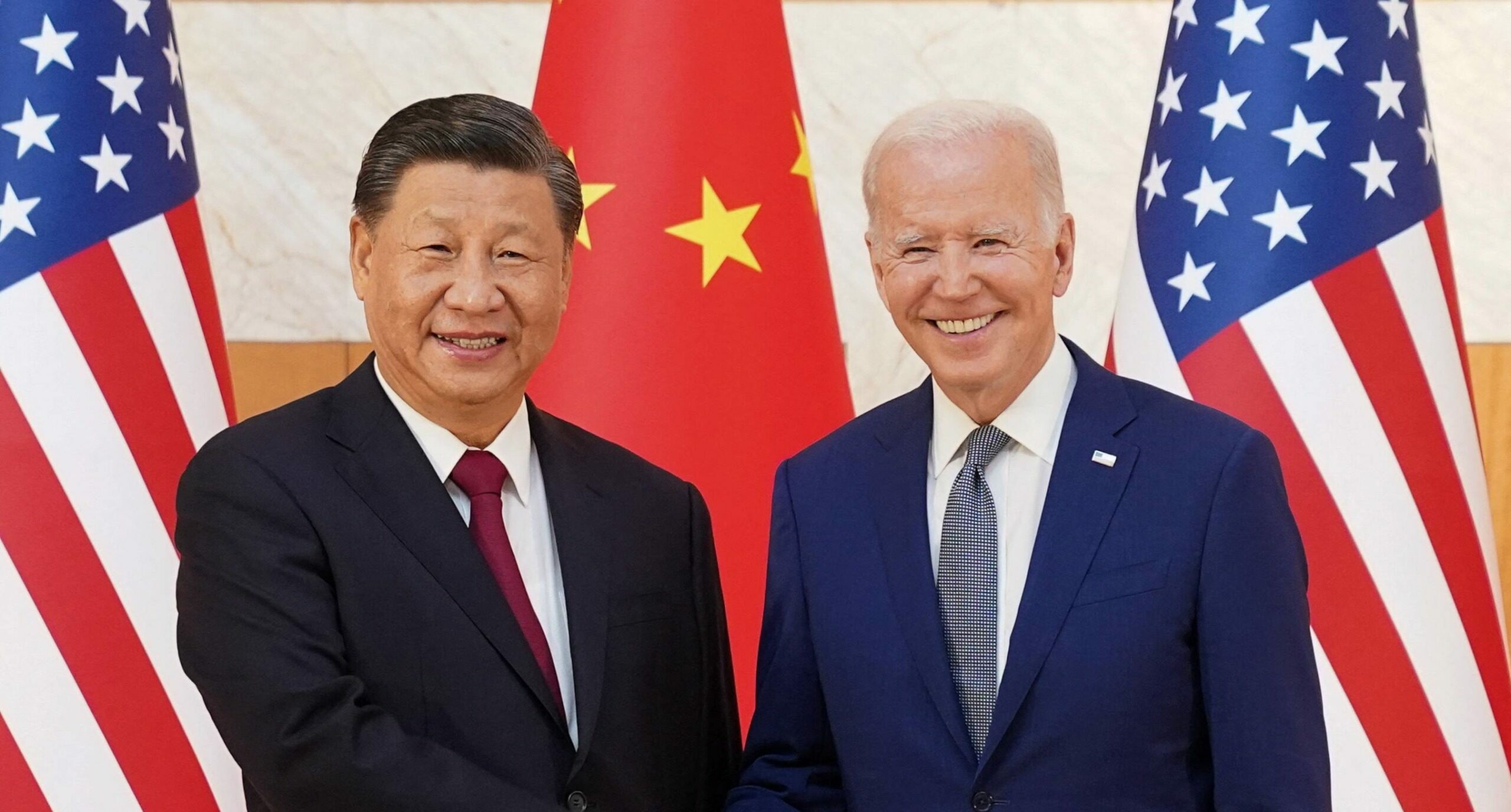Testing Times Ahead for Beijing
THE JAPAN TIMES
APLN member Kevin Rudd examines how China’s domestic political economy, its relationship with the U.S., and the impact of that relationship on other countries will be in 2023. Read the original article here.
Will China’s ideological doubling down on the state over the market continue to impede its overall economic growth performance?
Any attempt to look ahead at Sino-American relations in 2023 will uncover a landscape of uncertainties. There is not only the paramount strategic goal of maintaining peace across the Taiwan Strait, but also China’s often fraught relations with other powers such as Japan, South Korea, Australia, India and Europe, as well as its ties to wayward friends like Russia. And beyond these, there is the question of whether the Chinese economy lands safely or crashes in the year ahead.
China’s political economy
The work report delivered by President Xi Jinping at the Communist Party of China’s 20th National Congress in October makes clear that Chinese economic policymakers will emphasize the state-owned enterprise sector, party control, national economic self-sufficiency and a new emphasis on wealth redistribution in 2023 and beyond. This involves considerable policy correction from the emphasis on market forces, the private sector, and full international economic integration that we saw in previous decades under Deng Xiaoping, Jiang Zemin and Hu Jintao.
The key question for 2023, however, is the extent to which this ideological doubling down on the state over the market continues to impede China’s overall economic growth performance. It seems likely that the reassertion of the state’s role in the tech sector (over previous tech titans such as Alibaba, Tencent, JD, Didi and ByteDance) will prevent technological innovation and commercial application from remaining the strong growth driver that it was in the past. Moreover, the continuing deleveraging of the Chinese property sector also is likely to be a drag on economic growth.
Alongside these ideological factors is China’s adverse demographic profile, as well as the continuing uncertainty about the future of China’s domestic COVID-19 management regime. It all adds up to a formidable array of economic headwinds. It would seem, therefore, that in the minds of Chinese policymakers, the best and most secure means to push Chinese growth back toward a 6% target in 2023 will lie in what worked in the past: robust net exports and state infrastructure investment.
What about the regime’s efforts to boost private domestic consumption? After all, this was supposed to be the main driver for China’s long-term economic development, as policymakers began a decade ago seeking to engineer a new growth model that would no longer depend on low-wage, labor-intensive export manufacturing and high levels of state infrastructure investment. In this respect, looking carefully at the Party Congress work report, the test will be whether Chinese policymakers continue to pursue tax reform and social-security measures, such as subsidies for childcare and eldercare, to lift Chinese households’ disposable income and boost overall consumption.
In addition to these measures, it will be important to analyze the impact of China’s new “common prosperity” agenda, in addition to new language in the Congress work report on new regulations concerning wealth accumulation, to see whether this leads to greater wealth redistribution to average households. From an economic perspective, however, this becomes critical in determining whether private domestic consumption can offset the weaknesses driven by ideology, demography and “COVID-ology” that emerged during the course of 2022.
U.S.-China relations
Xi’s meeting with U.S. President Joe Biden at the Group of 20 summit in Bali in November is likely to create an opportunity to stabilize bilateral ties, though this should not be equated with an overall effort to normalize the relationship. Tactically, both sides appear to have concluded that it is worth finding ways and means to contain their diplomatic rupture in the near term, without seeking to mend it. Furthermore, China’s medium to long-term strategic intentions concerning Taiwan appear to be unchanged.
If anything, a careful reading of the language used in the official Chinese readout from the Biden-Xi summit arguably indicates a hardening in China’s position on Taiwan. For the first time, Xi refers to Taiwan as “an insurmountable red line” in the U.S.-China relationship. Furthermore, he points to the U.S.-China position on Taiwan as constituting the “foundation of the political relationship between the two countries.” Neither of these positions indicate the emergence of any tactical flexibility on China’s part on this core question.
Nonetheless, despite this relative hardening, the summit readout contains new language on the Chinese and American sides about the possibility of finding a new stabilization mechanism in the short to medium term. For example, Xi referred to the need to find new “protections” for the bilateral relationship in order to avoid crisis and conflict. Xi has also deployed new language in regarding the need for a “safety security net” to mitigate such risk further. In addition to these two new linguistic formulations, Xi has authorized senior officials to “maintain strategic communications” between the two sides, including the re-constitution of the U.S.-China working group. This may result in US Secretary of State Antony Blinken’s proposed visit to Beijing in February-March 2023.
Mechanisms such as these are no less welcome for being limited in purpose. Their content (or lack thereof) will determine whether the two sides can bring about a sustainable lowering of the tensions between them.
Must other countries choose sides?
Obviously, the state of the world’s most important bilateral relationship will affect other countries throughout 2023. This will be most evident in Europe, where the United States will seek to double down on its efforts to secure European support for the semiconductor export ban it unilaterally announced in October. The latest restrictions are of far-reaching significance. The fact that they were not announced with European support indicates the level of European resistance and, in some cases, hostility toward this direct U.S. effort to bring about a fundamental technological decoupling with China.
European leaders should brace themselves in 2023 for further U.S. efforts to bring the Europeans on side with the new regime. Both sides will recall the brutal exchanges in previous years over the imposition of technology bans on Huawei and the use of its equipment in 5G networks in countries across Europe. The U.S. concluded that its efforts were rewarded with a high level of European compliance. It is likely to try to achieve the same result with this new round of export bans.
The next year will also feature a new debate about India’s economic relationship with the United States. Indian support for a large part of the Indo-Pacific Economic Framework, launched by the U.S. in 2022, will be tested in terms of how far both sides are prepared to go in pursuing deeper economic ties. India has plainly concluded that a normal political or economic relationship with China is out of reach, owing to the residual effect of repeated Chinese incursions along the Sino-Indian border while Xi has been in office. The Indian economy is already opening up more to the West, with free-trade agreements already negotiated with Australia, Canada, the United Kingdom and the European Union, leaving open the possibility of economic re-engagement with the U.S. itself (depending in large part on the waning of protectionist sentiment in both countries).
As for the impact of U.S.-China relations on Southeast Asia, and on Asia more broadly, increasing geopolitical and geoeconomic bifurcation will continue to resonate throughout the region. This will create continued discomfort for South Korea. It will be much less uncomfortable for Japan, though it will continue to pose pressures for Australia. Beyond these three U.S. security allies, there will be a continued search for geopolitical autonomy. The 10 members of the Association of Southeast Asian Nations state to maintain some measure of equidistance between the U.S. and China, maximizing their political and security interests with the Americans in most cases, while maximizing their trade and investment interests with China. Whether ASEAN can achieve a sustainable balance remains to be seen.
The year 2023 therefore looms as another dynamic year both in China’s domestic political economy, its relationship with the U.S., and the impact of that relationship on other countries. China’s economy on balance is likely to remain growth-challenged. Its relationship with the U.S. may stabilize in net terms (barring an external destabilizing event, especially one arising from Taiwan’s domestic political process in the leadup to the island’s next presidential election in 2024). Throughout the year, and almost certainly beyond, the tensions arising from the U.S.-China relationship will continue to manifest across Europe and Asia.
Image: Chinese President Xi Jinping’s meeting with U.S. President Joe Biden at the Group of 20 summit in Bali in November is likely to create an opportunity to stabilize bilateral ties. | REUTERS




